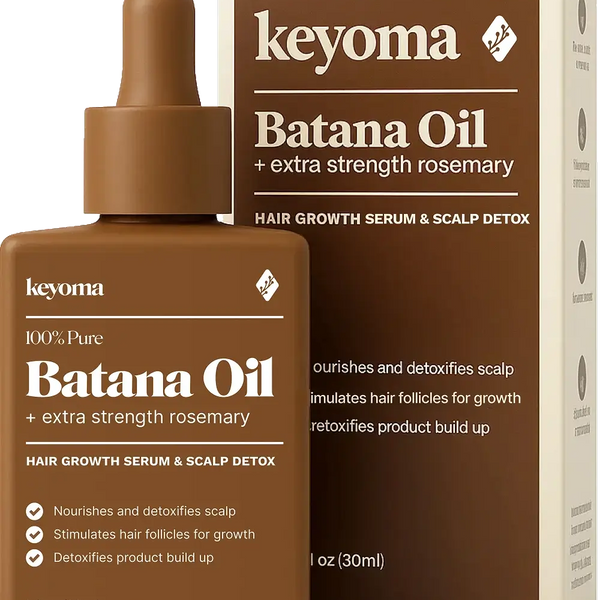In this article
You pull your fingers through your hair and pause. More strands again. This is not the first time this week. Not even close. It is on the pillow, in the drain, caught in your comb.
Could it be stress? Could it be something else? That uncertainty alone is enough to get under your skin.
Stress and anxiety can absolutely lead to hair loss. But it does not always show up when you think it will. Hormones shift. Sleep falls apart. Your body stays tense. Your scalp often feels it first.
Feeling overwhelmed is real. Watching your hair respond to it? Even harder. So what is really going on, and what can you do about it?
Why Hair Falls Out During Stress

When you are under pressure, your body does not take it lightly. Your hair is no exception. Stress can push hair follicles into a resting phase, which stops them from growing when they normally would. The cycle cuts short.
This is why you might suddenly notice shedding or feel your scalp thinning without warning.
And it usually happens when you are already stretched thin. That is what makes it so tough to deal with.
What is Telogen Effluvium?
Telogen effluvium is what happens when more hairs than normal shift into the resting phase of the growth cycle. It does not last forever, but it can be deeply unsettling. One day you are fine, the next day there is hair on your pillow, on your clothes, and clogging the drain.
This is actually one of the most common forms of stress-related hair loss . And it often shows up late. Sometimes weeks. Sometimes months after a big event, like a health scare or personal upheaval.
How Cortisol Disrupts Hair Growth
Stress does not work quietly. When it sticks around, your body starts releasing more of the hormone cortisol. Elevated cortisol levels interfere with your natural hair cycle. The growth phase cuts short. Follicles stop early.
The end result is less growth and more shedding , especially if that stress keeps dragging on.
Stress-Triggered Hair Loss Patterns
This type of hair loss does not usually form patches or leave bald spots. But it shows up in other frustrating ways. You may see diffuse thinning across your scalp. Or you might notice clumps of hair shedding when you brush or shower.
And it usually does not come with warning signs. These patterns show up quietly, often weeks—or even months— after the actual stress occurred.
How to Tell If Stress Is Making Your Hair Fall Out

Sometimes the signs are in your face. Hair on your pillow, in the drain, on your clothes. Other times, it sneaks up. One morning you grab your ponytail and it feels... thin. And you stop and think, "When did this start?"
If you have been through something hard—emotionally or physically—and now your hair is changing , it probably is not random.
You are not overreacting. Your hair is just being honest with you. So how can you tell if stress is behind it?
Increased Shedding
You see it on your pillow. Then again in the shower. Later, there is some on the floor. And you wonder. Has it always been like this?
That kind of sudden fallout is often the first red flag for stress-related hair loss . Some mornings feel like you are pulling out clumps without warning . It is not slow or predictable.
It hits all at once. Especially when nothing else seems to have changed.
Diffuse Thinning
This one is harder to catch. There are no bald spots. But your part seems wider. Your bun feels smaller. The hair that used to look full? Gone.
That is diffuse thinning . It is exactly how stress-related shedding often shows up.
Timing
This part can be confusing. Stress-related hair loss does not show up right away. It waits. Sometimes it takes two or three months after the event before anything happens.
You start to ask, "Why now?" But your body moves at its own pace. And that delay makes it harder to connect the dots.
Still, once you see it, the pattern makes more sense.
No Scars or Irritation
Check your scalp. Is it red? Itchy? Flaky?
If not, that matters. Hair loss from stress rarely leaves visible damage. No scabs. No rash. Just more strands falling out—and no obvious cause.
Possible Scalp Issues
But stress can show up in other ways. It weakens your scalp's natural barrier , especially if you are not sleeping well or skipping basic care.
So you might notice itching, dryness, or flakes —especially if you are using too many products or not washing often enough.
Sometimes it is not what you added. It is what you stopped doing.
Hair Root Appearance
Pick up a few fallen strands. See a white bulb at the end ? That usually means telogen effluvium . The hair finished its cycle before falling out.
If there is no bulb or the end looks broken, you might be dealing with mechanical damage or breakage. That usually comes from styling, tension, or rough handling.
Your hair leaves hints. You just have to know where to look.
Who’s More Prone to Stress-Related Hair Loss?

It’s not always fair. Some people go through high stress and their hair never flinches. Others? A rough month and suddenly the drain’s full.
Certain groups are more likely to deal with stress-related hair loss —and it’s not always about age. Sometimes it’s hormones. Other times, life just hits hard.
If you’ve been feeling like it’s “only happening to you,” you’re not imagining it. Stress shows up differently for everyone.
Stress hits everyone differently, and your body’s reaction isn’t always the same as someone else’s.
Some people are more likely to deal with hair loss from emotional stress, physical shifts, or sudden life changes that send the system into overdrive.
New Mothers and Postpartum Women
After giving birth, your body goes through a lot—including major hormonal shifts . Those changes often cause temporary hair loss , especially when paired with sleep deprivation and the emotional ups and downs of new motherhood.
Adults Facing Chronic Work or Life Stress
Tight deadlines, money worries, juggling family—it adds up fast. If you're under chronic stress at work or home , your body feels it, and so does your scalp. Over time, prolonged hormone disruption and poor sleep can lead to noticeable hair shedding.
People Recovering from Illness or Surgery
A major illness or surgery can seriously throw your body off. That kind of physical stress can disrupt the hair growth cycle , delaying or even pausing it for a while. As you start to heal, it’s common to see more shedding than usual .
Those with Anxiety or Sleep Disorders
When anxiety kicks in or you're not sleeping well, your body starts producing more cortisol , the stress hormone. That rise in cortisol levels can mess with your recovery and your hair cycle.
People dealing with chronic stress, panic attacks, or insomnia often notice more shedding—even if there's no single dramatic event behind it.
Individuals with Hormonal Shifts (e.g. menopause)
During menopause or perimenopause, your hormone levels shift , especially estrogen. That drop can lead to hair thinning , which becomes more noticeable over time. On top of that, your body becomes more sensitive to cortisol , making stress-related hair loss even more likely.
What You Can Do Right Now
Hair piling up in your brush lately? It’s not your imagination.
Stress-related hair loss is usually temporary , but that doesn’t mean it feels that way. Your scalp’s on edge, and honestly? So are you. It’s okay—this part’s fixable.
Most people see hair regrowth within 3 to 6 months after the stress dies down. If your body’s been through a lot, it might take longer—and that’s normal, too.
Here’s what you don’t need: tight buns, hot tools, or harsh chemical-laced products pretending to help. Instead, go for gentle, additive-free care that gives your scalp what it’s been missing.
Think of your scalp like the rest of your skin—sensitive, reactive, and totally affected by what you put on it. That’s why clean, plant-based formulas aren’t just trendy—they work.
Keyoma’s Batana oil skips the usual junk. No dyes. No parabens. No weird additives. Just 100% plant-based ingredients , handcrafted in small batches.
“I saw less hair in the drain within weeks,” one customer told us. “It’s the only thing my scalp doesn’t freak out about,” said another.
Ready to Take Action Against Stress Hair Loss?
Hair loss from stress is common—but it's also manageable.
You don’t need harsh treatments or prescriptions to see real progress. Start by choosing a product that supports your scalp with clean, proven ingredients.
Try Keyoma’s Batana oil to restore balance, support regrowth, and reconnect with a simple, natural hair ritual.
Take control of your hair story—starting today.
Featured Product
100% Pure Batana Oil + Rosemary









